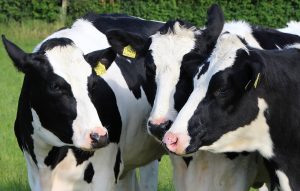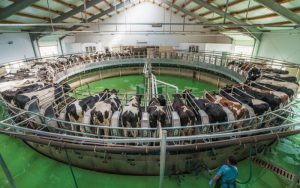
The scale of change outlined by the National Animal Welfare Advisory Committee (NAWAC) and presented to farmers last month is overwhelming, DairyNZ’s general manager for sustainable dairy David Burger says.
It was hard for farmers to assess the impact on their farm given the volume of change and the complexity of the document and the language used in it.
“Farmers are very concerned with it.”
Burger says the proposed changes showed a shift from a focus on outcomes to more prescriptive rules.
“There’s more than 100 bullet points on minimum standards, more than 100 new bullet points on best practice and more than 250 bullet points on example indicators. The document has got very complicated.”
Submissions on the proposed changes closed last week.
The key areas of change range from body condition score, intensive winter grazing, shelter, provision of lying surfaces and limiting time on hard surfaces, calf rearing and end-of-life management.
Much of the farmer feedback centred around those areas, he says.
“Even for our team, who are technical experts at this, it’s been a very complicated document. It’s not written in plain language.”
Burger says there are opportunities to improve the document and DairyNZ’s submission has made a number of recommendations reflecting that.
“We’re not just saying, ‘this is unworkable, throw it all out’.”
Animal welfare was important for the sector and it supported having a code with standard.
But that code needs to be practical and outcomes focused, Burger says.
He hopes the Government will undergo further consultation before deciding on what it will amend in the code because of the size and complexity of the changes being proposed.
Likewise, Federated Farmers animal welfare spokesperson Wayne Langford says the proposals are overly prescriptive and fail to account for the different farming systems within the industry.
“The code is trying to push us down one way or another and one of the best things about the New Zealand farming system is that you can do it in a number of different ways and we do that without affecting animal welfare.”
A better format would be to set a minimum standard that recognises the different farming systems and innovations that exist within the industry.
Langford says much of the feedback they have received was various versions of this message.
The federation also created a survey to gauge farmer opinion on the draft code.
Langford says in the short period of time it has been in operation, it has received hundreds of replies.
“Some of the feedback coming out of that is that there’s definitely a motivation to do better. I think we’re on a continuous path for animal welfare and that showed through in the survey.
“But being overly prescriptive in how we do that doesn’t match that. What we want to do is let farmers work that out for themselves around how it works best for their farms.”
An example of one of the points in the changes that raised red flags with farmers included changes to calf rearing, which would mean for the first three weeks after birth calves must be fed a suitable good quality liquid feed at a rate of no less than 20% of their body weight divided into no less than two feeds per day.
“The [milk] volume is far too high and it includes all young stock reared out to weaning including all dairy-beef that leaves dairy farms.
“If you put that into practice, it removes the whole dairy-beef market because they can’t afford to feed a calf 20% of its body weight in milk powder,” Langford says.
The feedback was not all negative.
The previous code lacked detail around cows calving on winter crops, while the new code says the cows must have a well-drained surface and shelter for at least 14 days prior to calving.
While Langford thought the 14-day period was questionable, he says it was not good enough for farmers to have cows calving on those paddocks.























